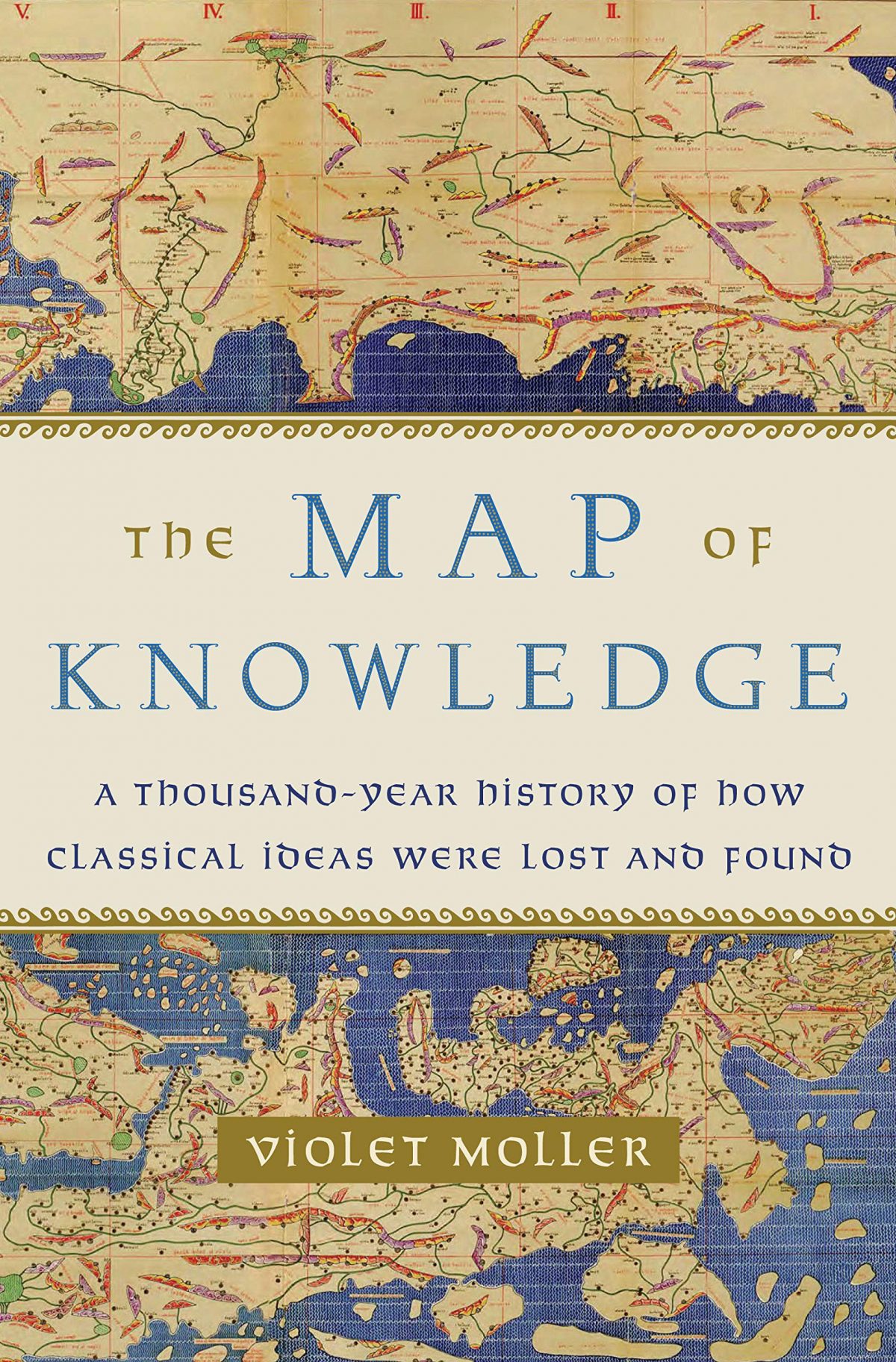Moller, Violet. The Map of Knowledge: A Thousand-Year History of How Classical Ideas Were Lost and Found. New York: Doubleday, 2019.
There has been much scholarly discussion in recent decades over how “dark” the European Dark Ages really were. While the debate over the extent of continuity between Rome and its various “barbarian” successor states will likely remain for quite some time, one sharp break that cannot be denied is the loss of countless texts, most notably those of the ancient scientists and natural philosophers. A millennium later, however, some of those texts would be rediscovered and go on to fuel the Renaissance, Enlightenment, and Scientific Revolution. Why did this knowledge reappear, and where had it gone during those intervening thousand years? Violet Muller answers these questions and more in her combination history / medieval travelogue, The Map of Knowledge.
Beginning with the fifth century, Moller’s work tracks the preservation and transmission of three specific authors of the ancient world, each the pinnacle of his respective field of study: Ptolemy (astronomy), Euclid (mathematics), and Galen (medicine). This highly targeted approach to her history of ideas allows Moller the unique opportunity to delve into the histories of specific manuscripts, tracking them and their copies across the medieval world through centuries of upheaval. Indeed, The Map of Knowledge is organized geographically, with each chapter focusing on a different city of these texts’ journeys towards Christian European rediscovery. Students of history will likely not be surprised by the general themes: that the Dark Ages were not so dark outside of Europe, that the Muslim Near East flourished during the Early Middle Ages and preserved great amounts of ancient lore, and that the resurgence of the Italian city states and fall of Constantinople led to these texts finding their way back to Europe. In the process, however, readers learn a host of other information as Moller paints a picture of each of these cities, from Late Antique Alexandria to Renaissance Venice, bringing home the history and intellectual pedigree of key locations of the Middle Ages.
The drawbacks to this city-focused approach come close to outweighing the benefits, however. The choice to focus exclusively on only three authors and seven cities means that this should really be classified as a micro-history. Moller’s format leaves her inherently unable to deal with larger trends or movements that did not involve her cities or chosen fields of knowledge. Major events in the history of Medieval Europe pass by more like shadows, and readers are left wondering how, say, the Crusades or Reconquista affected the loss and preservation of knowledge as a whole. Unsurprisingly, these choices can also lead to slightly myopic analysis. Moller argues numerous times that the idea of conspicuous royal consumption of wealth originated in Baghdad with the Abbasid Caliphate and reached Europe via Sicily, informing ideas of proper monarchical behavior ever since. While I am open to being convinced about certain specific rituals, the claim that kings lavishly spending on luxuries “originated” anywhere, let alone as late as the ninth century AD, is simply not credible.
Ultimately, The Map of Knowledge serves precisely as its title might suggest. While readers cannot find the entire history of ancient preservation within its pages, Moller’s work serves as a useful guide, a sort of “Top Seven” list of the most interesting points to examine. For those seeking more, Moller can serve as a useful mustering ground before delving into more serious fare. For more casual readers simply looking to explore an unfamiliar era, The Map of Knowledge will serve as a more than competent guide.
